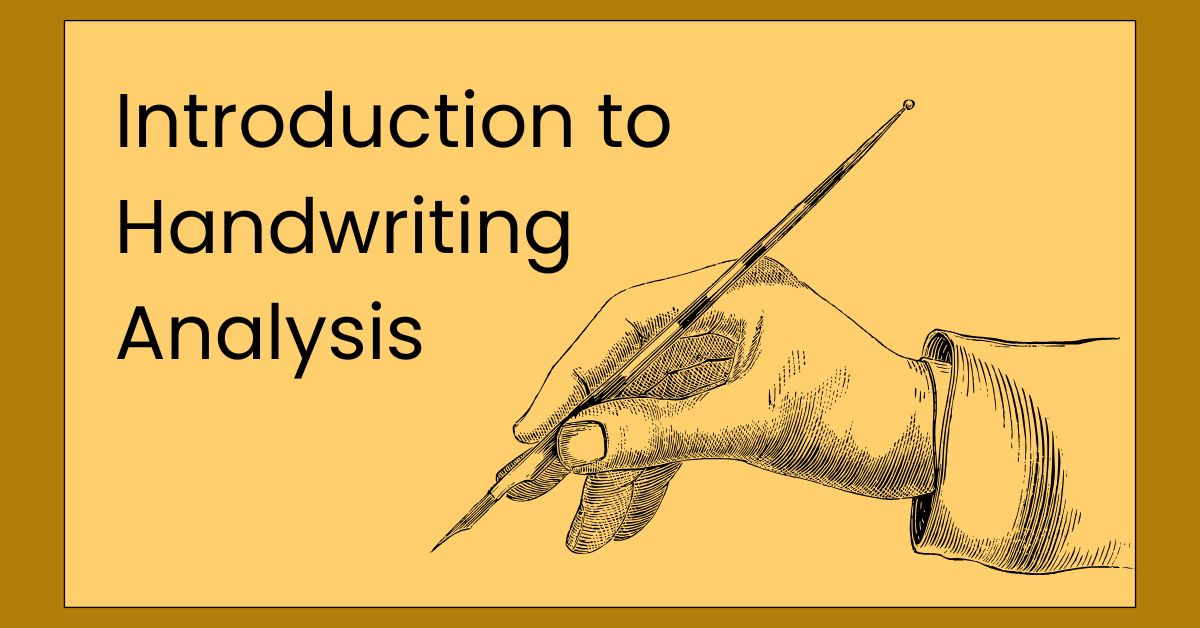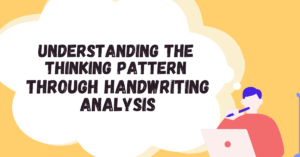Handwriting analysis also known as “Graphology”. The word “graphology” is a combination of the Greek word grapheirt, which means “to write,” and the suffix “ology,” a branch of scientific study. Graphology, then, is the study of writing based on a growing body of knowledge which is constantly being tested in practical use. Since it is a continuing and growing body of knowledge, and not a codified system like basic arithmetic, the student should not be alarmed to find varying, sometimes conflicting interpretations assigned to a stroke or shape. It is possible to understand writing character using different approaches to the specific origins, just as the medical and psychological fields get results even when starting from different positions. And like medicine, graphology is also an art of combining and synthesizing information that requires training and judgment in its application.
Writing is a physical process. The brain sends an order through the nervous system to the arm, hand and fingers, where together they manipulate the writing tool.
In this way, the intent to write forms deep within the creative processes of the mind and makes writing an expressive gesture representative of the mind behind the pen. Despite the teaching of a standard letter model to form the letters and words necessary to express our ideas, no two writings are exactly alike. An American statistician determined that the possibility of two writings being identical is one chance in 68 trillion sample of handwriting. Every written sample displays the same wonderful variety as the Faces, fingerprints, voices and bodies of us all. We recognize our friends’ voices on the phone, and by the tone alone know their state of happiness or sadness, anger or warmth. Handwriting is a reflection of mood changes, characterizing the writer’s state of mind at that moment. Emotional factors dictate the form of the writing stroke. It is possible to determine personal behavior by studying the mannerisms of formation and spacing within a writing. Handwriting matures, grows or disintegrates along with the personality, or with physical changes due to age, health, or tension. Personality development can be studied by examining samples penned at various times through the years. These examples provide a visual history of the development of a life emotionally, physically and mentally. People study handwriting for various reasons. For example, the science of criminology offers courses of study which entitle one to be licensed as a handwriting expert. Testimony of the handwriting expert is admissable in a court of law for purposes of establishing identification or validity of a particular docurlien t,. The professional title for one qualified in this field is “examiner of questioned documents.” These experts work in cooperation with law enforcement agencies, attorneys or anyone interested in determining officially who wrote what, where and under what conditions. Famous trial cases have involved the services of a handwriting expert to help determine guilt or innocence of the defendant, just as such trials have involved
psychologists and psychiatrists.
Handwriting Analysis: Handwriting analysis is a modern form of psychology that identifies personality traits and human character through handwriting. Personality is the term for behavior and character. In the study of psychology, personality is a subcategory of general psychology. Personality is a cluster of character traits and the corresponding behaviors based on those character traits. Handwriting analysis is the quickest way to accurately discover someone’s true personality out of any formal psychological test on the market today. Handwriting is accurate because once you learn to write, the structure of your actual handwriting is handed over to the power of your subconscious mind. Your handwriting changes as your personality evolves or changes as a reaction to life’s many positive and negative events. It is a scientific method of identifying, evaluating, and understanding personality via the strokes and patterns revealed by handwriting. It is not document examining, which involves the examination of a sample of handwriting to determine the author. Document examining is often used in forgery cases–no comment on character or personality is derived from the handwriting.
Handwriting Analyst/ Graphologist: Those how analysed the handwriting is called handriting analyst. A larger group of people who study handwriting as a means to discover themselves and others. These people are called graphologists. They know that exaggerations in writing formations suggest similar exaggerations in the personality of the writer. Character traits that deviate from the norm will show up in the handwriting. The graphologist learns to analyze the difference between normal and abnormal traits in the writing. Both fundamental knowledge and interpretive skill have their importance in an accurate analysis of a handwriting sample, and all interpreters unavoidably bring their own personal shadings and colorings to the portrait. The realm of the mind is a subjective area of study. Any kind of psychoanalytic diagnosis or therapy presents the same problem of subjectivity. Handwriting analysis is not infallible.
History of Handwriting Analysis: The interest in handwriting as an indicator of personality has its origins far back in history. A Brief History of Handwriting Analysis Handwriting analysis is known to have been used both in ancient Greece and for many centuries by the Chinese. Over 2000 years ago Aristotle noticed a correlation between handwriting and personality. However, not much is known about either of these periods. In 1622, Italian physician and university professor, Camillo Baldi wrote the first known published book on graphology. Baldi stated that each person had unique writing that cannot be exactly copied by anyone else. This started an interest in Europe on the subject, which has continued and grown ever since. In the 1870s the word “graphology” was first used, and interest spread throughout Europe to the extent that some universities started offering degrees in the subject. When psychology emerged as a profession around the start of the 20th century, it brought with it a great advance in the interest in graphology. Carl Jung, the famous Swiss psychologist recognized the validity of handwriting analysis. Europe is still the area where most research and use of graphology remains. It is also prevalent in Israel where it is estimated approximately 98% of job applicants will have their handwriting analyzed as part of the hiring process. In India, graphology is very popular although I have no statistics on that. In the 1980s, the US Congress acknowledged graphology as a branch of psychology. Although graphology is still not nearly as well known or accepted in North America as it is in Europe, its use is steadily growing as a tool for professionals in a wide variety of occupations, and as a profession in its own right.
What does Handwriting Say About Any Person: Your handwriting is an insight into your personality or, in other words, your self-image. Have you ever thought it was interesting that your handwriting might unveil hidden aspects of your personality? It is a curious notion that has fascinated psychologists and enthusiasts for centuries. Within the elegant curves, precise angles, and unique formations of your handwriting lies a treasure trove of information waiting to be deciphered. Your handwriting is an intimate expression of your thoughts, emotions, and subconscious impulses—a visual representation of your innermost self. Just like a fingerprint, it is an unmistakable and personal mark that carries a wealth of meaning. Through the study of graphology, we unlock the door to understanding the profound connection between your pen and your persona. As we unravel the mysteries hidden within the lines and loops, patterns, and spacing, we begin to decipher the language of your handwriting. Each stroke reveals clues about your temperament, values, and attitudes. It offers glimpses into your creativity, confidence, and level of organization. It even sheds light on your interpersonal skills, leadership qualities, and potential for success. By examining the subtleties and intricacies of your script, we embark on a journey of self-discovery, allowing you to understand better who you indeed are. It is a voyage that transcends surface-level interpretations, going beyond the obvious and uncovering the layers beneath.
Each element contributes to a vivid portrait of your personality, from the slant of your letters to the pressure applied to the page. So, as you embark on this exploration of graphology, prepare to be astonished by the depth and accuracy of its revelations. Brace yourself for a profound awakening as ink strokes come alive, speaking volumes about your true nature. Are you ready to uncover the hidden truths and embark on a transformative journey of self-discovery? Let your handwriting be your guide as we dive into the enthralling world of graphology, unraveling its mysteries, one stroke at a time.



